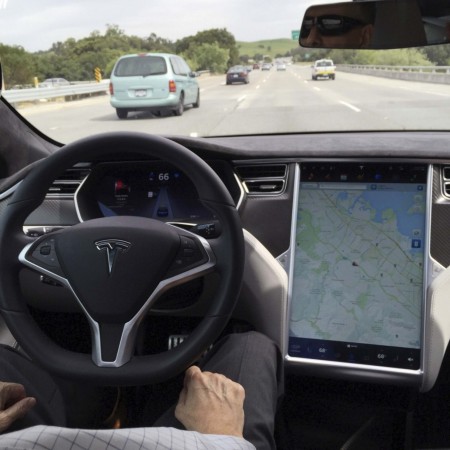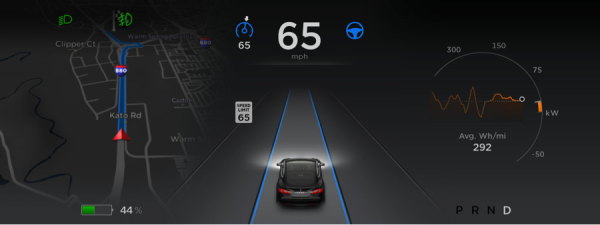July 11, 2016 – I must admit that when I read about the fatality that occurred to a driver operating a Tesla Model S on Autopilot I had concerns about the maturity of the technology. Then I considered an incident that happened to me just a couple of months ago when a driver making a right turn hit me while I was walking across an intersection on a green light. Apparently my experience with bad drivers as a pedestrian is no longer uncommon here in Toronto with the number of pedestrians being struck by motorists at an astonishing high. I can tell you that none of the cars involved in any of these incidents used Autopilot or collision avoidance technology. Because if they did they wouldn’t be hitting pedestrians.
Peter Diamandis has his own personal bias as an owner of both a Tesla Model S and a Model X. Both cars feature Autopilot and he describes them as the best cars he has ever owned. He goes on to point at the media bias as feeding into the fear and uncertainty that comes with the introduction of any new technology.
———-
I own a Tesla Model S and Model X with Autopilot. Best cars I’ve ever had. So when the first death with Tesla’s Autopilot occurred, was I pissed? At Tesla? No, not at all. I was pissed at the media for its “negativity bias.”
Here are some relevant facts:
- Prior to this first unfortunate death (my sincerest condolences to the family), Tesla’s Autopilot had successfully, safely driven owners and their families 130 million miles.
- Among all vehicles in the U.S., there is a fatality every 94 million miles.
- Worldwide, there is a fatality approximately every 60 million miles.
As a frequent user of Autopilot, I can tell you, it makes me a safer driver, as it keeps me in the lanes when I’m groggy or distracted.
So where are the front-page media stories about how Autopilot “saves lives?”
The Media’s Negativity Bias: Reality vs. Spin
The press has a bias towards negativity. Why, because we pay 10 times more attention to negative news versus positive news. Negative headlines sell newspapers and attract eyeballs for their advertisers. As a result, stories are many times misconstrued and exaggerated. Technology companies often suffer the worst of this misrepresentation, as technology, by nature, can be complicated, difficult to understand and frequently disrupts the establishment.
After Tesla released a letter detailing the conditions around the first fatal Autopilot crash, thousands of angry articles began to spread across the Internet – literally a feeding frenzy raising concerns for the future of driverless cars. Most lambasted Tesla for their efforts in releasing Autopilot to the public before it was ready, insisting that this incident should force us to “reassess” driverless cars.
Here are a few high-profile examples:
- The New York Times ran a front-page story quoting experts who said that the accident was “a wake-up call” for the rapidly burgeoning self-driving industry.
- Fortune made scathing accusations about Musk and Tesla for misleading shareholders and not sharing the crash news sooner.
- A local Florida ABC News affiliate said the crash was “raising safety concerns for everyone in Florida.”
Wow… really, everyone?
As Elon succinctly put in a tweet to Fortune magazine, the “BS article increased your advertising revenue. Just wasn’t material to TSLA, as shown by market.”
Let’s Look at the Data
In the Tesla incident, many of the articles described Tesla’s Autopilot as “deadly” or “dangerous.” The reality is, when you look at the numbers, driving with Tesla’s Autopilot on is actually safer than driving without it, or driving a car that doesn’t have the feature. As Tesla reported this was the first known fatality in just over 130 million miles where Autopilot was activated. In fact every day hundreds of people are killed or seriously injured in cars across the United States with 33,000 deaths per year. Worldwide the number is approximately 1.25 million deaths.
Elon tweeted to the press: “If you care about auto deaths as material to stock prices, why no articles about 1M+/year deaths from other auto companies?”
The only reason the Tesla Autopilot death story was newsworthy is because it involved a new technology (AI/Robotics/Autonomous Driving) – a nice scapegoat for the media to blame. And besides the fact that Autopilot feature makes driving safer in general, no one mentioned that the Model S and Model X actually had the lowest probability of injury of any car ever tested by NHTSA (the National Highway Traffic Safety Administration).
How Autopilot Works
Tesla’s Autopilot is a software upgrade to the Model S allowing the vehicle to use its unique combination of cameras, radar, ultrasonic sensors and data to automatically steer down a highway, change lanes, and adjust speed in response to traffic.
The above image is a representation of the Tesla Model S dashboard. The Autopilot uses 12 sensors on the bottom of the car, six in the front and six in the back. It uses a front-facing camera next to the rear view mirror. It also has a radar system under the nose of the car that senses what’s in front of the car. And critically, all of the data processed by these sensors is fed back to a central hub so that all Tesla cars can learn from it, called Fleet Learning.
The data is aggregated (anonymously) into maps that let the central Autopilot system see the precise paths that cars take, and don’t take. “Each driver is effectively an expert trainer in how Autopilot should work,” explains Elon. The result, the network of Tesla vehicles constantly learns more about where cars do and don’t actually travel. Thus, the system’s capabilities “will keep improving over time, both from the standpoint of all the expert drivers … training it, but also in terms of the software functionality” Elon continues.
This is so important and bears being repeated. With every single mile driven, these cars get safer and safer.
As Tesla reports, “As more real-world miles accumulate and the software logic accounts for increasingly rare events, the probability of injury will keep decreasing. Autopilot is getting better all the time, but it is not perfect and still requires the driver to remain alert. Nonetheless, when used in conjunction with driver oversight, the data is unequivocal that Autopilot reduces driver workload and results in a statistically significant improvement in safety when compared to purely manual driving.”
Implications for Artificial Intelligence and Robotics
What pisses me off is that technology makes our lives better in so many different dimensions. But we fear what we don’t understand.
For example, genetically modified organisms (GMO) technology, allows to feed millions more and has never caused a death, yet an uneducated public reacts negatively to what they don’t understand. In the near future, AI, robotics, synthetic genomics and other exponential technologies entering further and deeper into our lives will be responsible for raising all of our standards of living, making our lives easier, and saving lives. But that won’t stop the fear mongers. If we see a death occur much of society’s gut reaction will be to reject what is new, rule it out, or dismiss it as “not working” or dangerous.
While some make efforts to shut down new technology rarely do regulatory bodies make an effort to measure the harm done by impeding innovation. This is true of autonomous cars. Sure we can shut down the effort and in so doing continue our annual death parade of 33,000 or more per year. Or we can embrace the technology and drive those death rates towards zero.
Technology is hard, but it’s worth it. It’s likely in 20 years we’ll look back on these days when we gave a 17-year-old kid with less than 20 hours of experience control of a 5,000-pound vehicle speeding along at 65 miles per hour and describe it as an insane practice. I’ll take an ever improving machine learning algorithm over a kid with a learners’ permit any day.












[…] Argues the technology far safer than humans operating vehicles and calls "negativity bias" of media an inhibitor to adoption of innovation. […]
This is the sad state of modern journalism. It is not a negative bias towards Tesla, it is a bias towards negative news. The commercial news industry is really just looking for ways to draw eyeballs, and the more sensational the stories, the more eyeballs they draw. This is an old problem, but with the rise of so many news channels, the “real” journalism of yore, is becoming a smaller and smaller fraction of the voice. The cost of in-depth journalism, and the public’s lack of attention span are going to wither trusted news to a very small slice of the piece of the knowledge pie.
Hi Steve, I think journalism is under siege as disruptive technologies further weaken traditional publishing. To some degree this dictates the need to publish content that is not well researched and in fact, often comes directly from publicists without a word being changed.